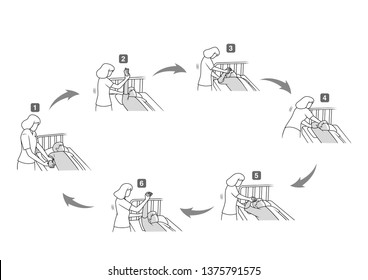

Have your pet sit down, then stand up.Similar to the above exercise, this helps your pet shift weight. Alternate with each leg except for the surgical limb. With your pet in a standing position, lift one leg (non-surgical limb) off the ground for 10-15 seconds.This helps your pet shift weight from one leg to the other. While your pet is standing, gently nudge your pet’s hind end from side to side.

These should be performed on a non-slip surface, such as a yoga mat or rug. Once your pet is consistently bearing weight on the surgical limb (typically around 3-4 weeks after surgery), there are other activities you can do with your pet to help build balance and strength. Here are videos demonstrating passive range of motion exercises and icing therapy. Passive range of motion exercises are also a cornerstone of at home rehabilitation. Icing helps to reduce inflammation and pain at surgery sites. We advise using ice therapy directly to the incision site for the first 3-5 days following surgery. It is important to restrict your pet from high impact activities during this time (running, jumping, playing). After a couple weeks the duration of these walks can gradually increase so that by 8 weeks after surgery your pet can have a 15-20 minute walk once or twice a day in conjunction with a couple other short leash walks. We recommend taking your pet for short 5 minute leash walks multiple times a day, beginning within 24 hours after surgery. Weight bearing is good for bone healing, maintaining range of motion in the joints of the affected limb, and maintaining muscle mass. Please check with your veterinary surgeon to ensure there are not any extenuating circumstances for your pet.įrequent leash walking is an important part of the TPLO aftercare.
RANGE OF MOTION EXERCISES PROFESSIONAL
If professional rehabilitation is not an option, we recommend several gentle at-home rehabilitation protocols to follow. However, we know this is not always going to be possible. Ideally, every pet would be able to follow up with a rehabilitation therapist following a TPLO so that their doctor can develop an individualized protocol. Just as returning an athlete to a game day situation too early can lead to re-injury, excessive rehabilitation can deter postoperative recovery from a TPLO procedure. Like much of medicine, it is important to tailor a rehabilitation protocol to a specific patient, considering the pet’s range of motion, strength, degree of healing, and ability to perform each exercise. Then swing the stick to the other side, feel the stretch, and hold for 5 seconds.Though physical rehabilitation protocols benefit recovery following a TPLO, no established or standardized rehabilitation protocol exists. Keep your arms straight and swing the stick to one side, feel the stretch, and hold for 5 seconds. Place your arms straight out in front of you at shoulder level.


 0 kommentar(er)
0 kommentar(er)
